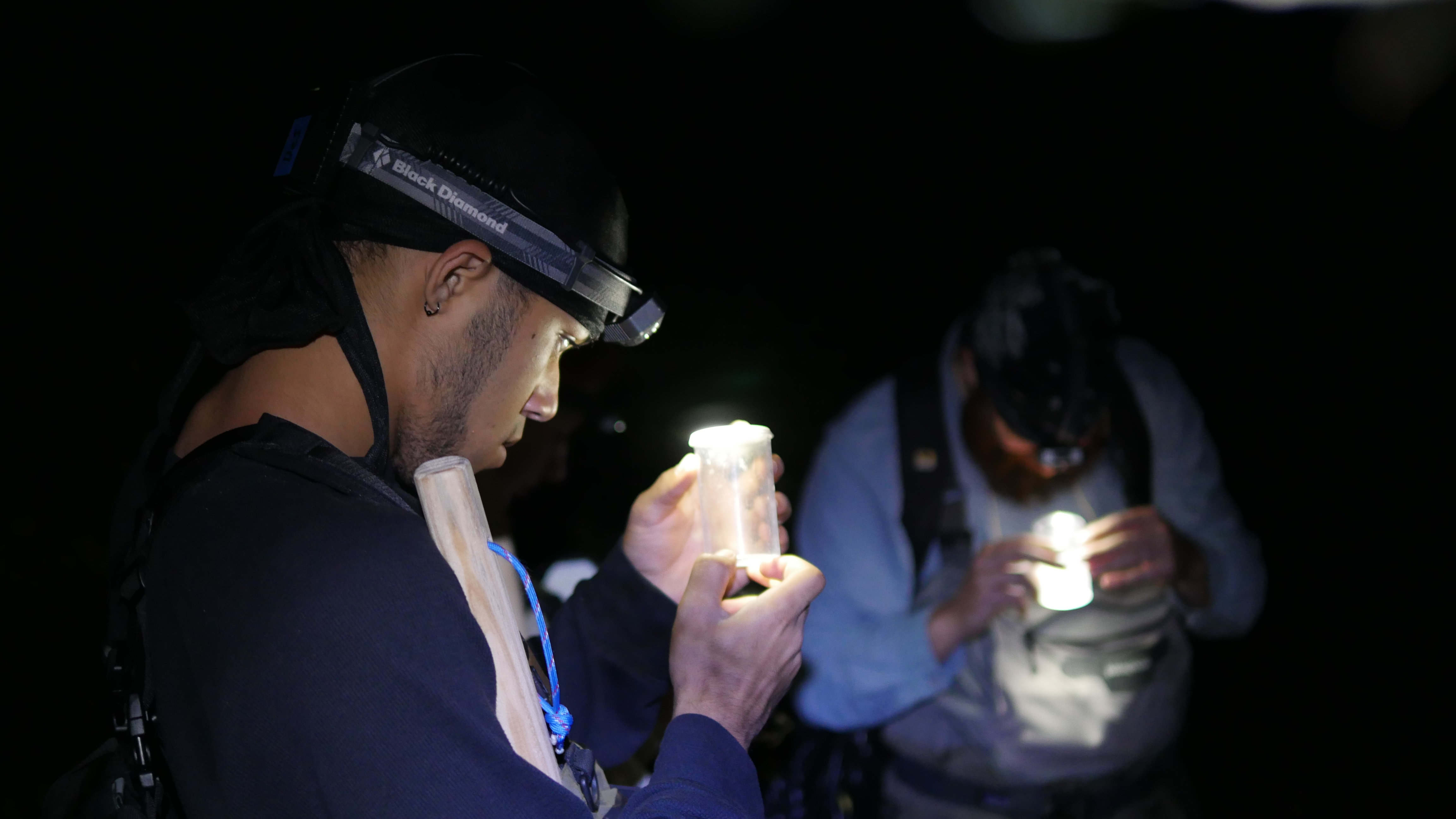Faculty & Student Researchers Tackle Big Questions with Little Arachnids
By: Megan Robinson ‘17
For three undergraduates, Kayla Gunther ’18, DeShae Dillard ’19 and David Dommermuth ’17, summer 2016 was all about spiders. The three worked as research assistants to Dr. Steven K. Schwartz, biology instructor and behavioral ecologist, whose report, “Males Can Benefit from Sexual Cannibalism Facilitated by Self-Sacrifice,” was recently published in Current Biology. Schwartz’s report examined the peculiar postcopulatory behavior of the dark fishing spider, though the undergraduate research assistants faced a broader question: what species of arachnids call Spokane home?
The Other 97%
“It’s always exciting to take an organism like spiders, behind which there is so much stigma, and show people why I am so interested in them,” says Dillard, one of Schwartz’s research assistants. “Usually after a conversation, people are far more fascinated by spiders than they were coming in.”
The team spent evenings collecting specimens in the dark, using headlamps to look for reflections off spiders’ eyes. During the day, they took the specimens back to the lab for identification. Each had to be meticulously labeled, including the location, date, collection method and name of the collector. A single excursion might take six hours, but it could take weeks to identify everything. “We get a lot of different species that come into our lab,” Dillard says. “Identifying takes skill and often takes so much time that you could spend a couple hours trying to identify a single specimen.”
The team documented 22 unique spider species from six field sites around Spokane and one site near Reardan, Washington, despite the fact that amateur identification keys list only three spider species for the entire Inland Northwest.
Dommermuth, another research assistant, explains, “Most of what we know about the planet is based on the organisms that are large and obvious—vertebrate animals and green plants.” Larger organisms are “easier to discover and identify,” but only make up about three percent of the planet’s biodiversity. The other 97 percent—including many small, unseen species like arachnids, insects, and other invertebrates—often goes unstudied or understudied. With the team’s thorough work, however, that void of research can begin to be filled.
Big Questions
Dr. Schwartz’s recently published report on the dark fishing spider, Dolomedes tenebrosus, was based on his doctoral and postdoctoral work in Nebraska and addressed a more specific question: given that the female dark fishing spider always eats her mate post copulation, what, if any, is the benefit for the male spider?
“We found that there’s something about eating the male that results in an increase in the number of spiderlings, and a slight but significant increase in spiderling mass. That increase in mass translates to a survival advantage,” explains Schwartz. In other words, the male’s self-sacrifice provides a benefit for his offspring that other food items (e.g., a cricket) cannot. The question Dr. Schwartz hopes to answer in the future is, “What is it about a D. tenebrosus male that results in this benefit? Is it a specific chemical or a limiting nutrient?” A definitive answer would improve scientists’ understanding of this curious mating behavior, and such knowledge is far from trivial.
“It seems really basic,” Dommermuth says, “but how can we be expected to preserve this planet’s biodiversity if we do not even understand it?”

